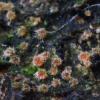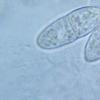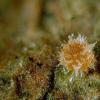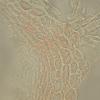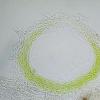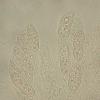
12-12-2025 18:39
Mirek GrycHello everyone.Macrofeatures similar to Mollisia b

09-12-2025 12:06
 Andgelo Mombert
Andgelo Mombert
Bonjour,Je recherche l'article concernant Hypobryo

07-12-2025 16:07
Arnold BüschlenHallo, ich habe in einer Moos-Aufsammlung (epiphy

08-12-2025 21:04
Mark Stevens"Hello everyone,I'm relatively new to microscopy (

08-12-2025 18:59
 Lothar Krieglsteiner
Lothar Krieglsteiner
.. found by a seminar-participant, I do not know t

08-12-2025 17:37
 Lothar Krieglsteiner
Lothar Krieglsteiner
20.6.25, on branch of Abies infected and thickened
Nectria poilue
Jac Gelderblom,
12-02-2012 15:24
Un ami m'a envoyé la description et les fotos ci-dessous d'une Nectria poilue, qu'il à trouvé dans les environs de Tilbourg, ville dans le sud des Pays Bas.
Périthécies repandues sur le substrat. Subiculum possiblement présent dans les fissures d'écorce entre vieux pyrenomycetes. Il est aussi possible que les carpophores croissent sur algues ou lichènes. Les périthécies, rouge-orange à jaune-orange, sont couvertes avec des poils blancs assez frappants. Pas de réaction avec KOH.
Asques à 8 spores, pas dáppareil apicale visible, 92 - 110 x 13 - 18 micron.
Spores très grands, assez diversiform, Il y a des spores longement cylindriques et d'autres plus courtes et plus larges. Parfois légèrement courbées. Une septum central peu rétrécie. une fois j'ai vu une spore très mure avec 3 septa. Les spores peuvent devenir très finemenr rudes mais generalement ils donnent l'impression d'être lisses. Dimensions 26 - 35 x 7 - 15 micron.
Les poils ont des parois épais, ils sont septés et un peu cyanophyl. Il forment des petites groupes, qui sont répandues sur tout le carpohore. Dimensions jusqu'à 150 x 12,5 micron.
Je n'ai pas pu trouver une Nectria avec cettes dimensions des spores.
Il y a quelque'un qui peut m'aider?
Amitiés Jac Gelderblom
Hans-Otto Baral,
12-02-2012 15:50

Re : Nectria poilue
Ji Jac
I think I had posted the same species
http://www.ascofrance.fr/search_forum/16063?
Under Trichonectria spec. Walter Jaklitsch told me:
das Ding kenne ich nicht. Könnte auch eine Bionectria sein. Dazu müßte man das Anamorph produzieren. Kannst es ja der Amy schicken.
On which substrate was yours? Guy Marson's was on Salix bark, an attached, quite undecayed branch.
Zotto
I think I had posted the same species
http://www.ascofrance.fr/search_forum/16063?
Under Trichonectria spec. Walter Jaklitsch told me:
das Ding kenne ich nicht. Könnte auch eine Bionectria sein. Dazu müßte man das Anamorph produzieren. Kannst es ja der Amy schicken.
On which substrate was yours? Guy Marson's was on Salix bark, an attached, quite undecayed branch.
Zotto
Alain GARDIENNET,
12-02-2012 16:19
Re : Nectria poilue
Hi,
Not a Nectria stricto sensu, not a Nectriaceae, but a Bionectriaceae, perhaps in genus like Nectriopsis or Lasionectria, or Trichonectria.
You should search around T. hirta (which has multiseptate ascospores) , as said Zotto. Alain
Not a Nectria stricto sensu, not a Nectriaceae, but a Bionectriaceae, perhaps in genus like Nectriopsis or Lasionectria, or Trichonectria.
You should search around T. hirta (which has multiseptate ascospores) , as said Zotto. Alain
Alain GARDIENNET,
12-02-2012 16:34
Re : Nectria poilue
Perhaps Nectriopsis indigens ?
I don't know well this species unfortunately.
Alain
I don't know well this species unfortunately.
Alain
Alain GARDIENNET,
12-02-2012 16:52
Re : Nectria poilue
Jac Gelderblom,
12-02-2012 17:15
Re : Nectria poilue
Sorry, Alain this link doesnt work'.
Amitiés Jac
Amitiés Jac
Alain GARDIENNET,
12-02-2012 17:18
Re : Nectria poilue
I find that ascospores of Nectriospsis indigens are 12-19 x 6-9 µm, so too small in comparison with yours.
I don't see anything else.
Alain
Alain GARDIENNET,
12-02-2012 17:27
Re : Nectria poilue
Jac, try the adress with adding ". pdf"
But you will see that the solution is not in this doc, unfortunately.
Alain
But you will see that the solution is not in this doc, unfortunately.
Alain
Hans-Otto Baral,
12-02-2012 17:44

Re : Nectria poilue
The pdf works here, and one can search for strings in this file.
I considered Trichonectria rubefaciens, combined by Diederich & Schroers, as a good candidate, but when I look up the cited paper by Lowen, then the spores are only 12-20 x 2-4 µm.
I think Nectriopsis indigens is smooth, not hairy.
Zotto
I considered Trichonectria rubefaciens, combined by Diederich & Schroers, as a good candidate, but when I look up the cited paper by Lowen, then the spores are only 12-20 x 2-4 µm.
I think Nectriopsis indigens is smooth, not hairy.
Zotto
Alain GARDIENNET,
12-02-2012 18:04
Re : Nectria poilue
Yes you're right Zotto, no hairs. So as I said, the solution is not there. Perhaps there isn't solution, perhaps it's new. I can't help you more.
Anyone else ?
alain
Anyone else ?
alain
Christian Lechat,
12-02-2012 18:38

Re : Nectria poilue
Dear Jac,
I think that maybe it is not a Bionectriaceae, but for to be sure, it is necessary to have its anamorphic state. I attach some pictures from a specimen collected by Jacques Fournier. which looks like yours, its anamorph in culture is Fusarium-like, then Nectriaceae
I would like to cultivate your specimen because it would be interesting to compare both species
Christian
I think that maybe it is not a Bionectriaceae, but for to be sure, it is necessary to have its anamorphic state. I attach some pictures from a specimen collected by Jacques Fournier. which looks like yours, its anamorph in culture is Fusarium-like, then Nectriaceae
I would like to cultivate your specimen because it would be interesting to compare both species
Christian
Hans-Otto Baral,
12-02-2012 18:48

Re : Nectria poilue
Yes, that looks similar. Is it unidentified? Could you please show us also the spores? What size?
Zotto
Zotto
Jacques Fournier,
12-02-2012 22:02

Re : Nectria poilue
Bonsoir Jac,
félicitations pour ta maîtrise du Français!
Un argument supplémentaire pour placer cette espèce dans les Nectriaceae est la réaction de la paroi des périthèces dans la potasse et l'acide lactique. Elle est souvent faible et difficile à interpréter mais on la voit bien sur la photo jointe d'une section montée dans l'acide lactique. Curieusement les cellules les plus externes ne réagissent pas.
J'ai rencontré cette espèce à de nombreuses reprises, sur des substrats variés, mais toujours de façon très dispersée, jamais formant une large colonie comme sur la photo que tu montres. On sera mieux fixé si Christian obtient une culture à partir de cette récolte mais je suis à peu près certain qu'il s'agit bien de la même espèce.
Pour l'instant il est difficile de la ranger dans un genre connu.
Amitiés,
Jacques
félicitations pour ta maîtrise du Français!
Un argument supplémentaire pour placer cette espèce dans les Nectriaceae est la réaction de la paroi des périthèces dans la potasse et l'acide lactique. Elle est souvent faible et difficile à interpréter mais on la voit bien sur la photo jointe d'une section montée dans l'acide lactique. Curieusement les cellules les plus externes ne réagissent pas.
J'ai rencontré cette espèce à de nombreuses reprises, sur des substrats variés, mais toujours de façon très dispersée, jamais formant une large colonie comme sur la photo que tu montres. On sera mieux fixé si Christian obtient une culture à partir de cette récolte mais je suis à peu près certain qu'il s'agit bien de la même espèce.
Pour l'instant il est difficile de la ranger dans un genre connu.
Amitiés,
Jacques
Hans-Otto Baral,
12-02-2012 22:10

Re : Nectria poilue
Hi Jacques
I will do the lactic acid and KOH test tomorrow with my material. I thought I tested KOH, but it seems I didn't.
So you think we all have the same species. Do you have a spores size at hand?
Zotto
I will do the lactic acid and KOH test tomorrow with my material. I thought I tested KOH, but it seems I didn't.
So you think we all have the same species. Do you have a spores size at hand?
Zotto
Jacques Fournier,
12-02-2012 22:37

Re : Nectria poilue
26-30 (-40) x 7.5-11 µm, pale brown at maturity
